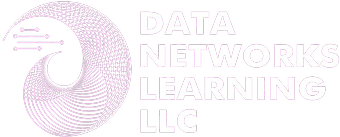How Python, Math, and Robotics Foster Creativity, Problem-Solving, and Future-Readiness
Introduction
We live in a digital era where technology is reshaping industries, economies, and societies. To navigate and thrive in this new world, today’s children need more than passive interaction with technology . they need to understand
how it works.
Introducing coding, mathematics, and robotics to children at an early age is one of the most effective ways to equip them with critical thinking skills, digital fluency, and future-ready competencies. By fostering technical and cognitive abilities during their formative years, we empower them not only to adapt to the future — but to lead it.
Why Early Exposure to Coding Matters
Children are naturally curious and open to new experiences, making them ideal learners for foundational STEM concepts. Engaging them in coding and computational thinking from a young age provides numerous developmental benefits:
Cognitive development: Enhances memory, logic, sequencing, and pattern recognition.
Creativity and innovation: Encourages experimentation, design-thinking, and creative problem-solving.
Confidence in technology: Builds familiarity and comfort with digital tools and platforms.
Real-world application: Demonstrates how abstract concepts like math or logic apply in practical contexts.
Learning to code early helps children transition from consumers of technology to confident, empowered creators.
Core Areas of Early STEM Learning
1. Python Programming
While Python is widely used in professional settings, its clear and readable syntax makes it ideal for beginners — including children. Early instruction focuses on simplified concepts through:
Visual programming interfaces (e.g., Turtle Graphics)
Game development with beginner libraries
Storytelling and animation
This introduces students to variables, loops, conditionals, and functions — all fundamental concepts in programming — in a way that is interactive and accessible.
2. Mathematical Thinking
Coding naturally reinforces mathematical thinking. It enhances:
Logical reasoning
Problem decomposition
Algebraic thinking
Spatial awareness (especially through game design or geometric visualizations)
Mathematics, when integrated with coding, becomes dynamic and contextual — turning abstract numbers into creative outcomes.
3. Robotics
Robotics education provides hands-on learning through building and programming real-world devices. It enhances:
- Engineering principlesm
- Mechanical understanding
- Sequential thinking
- Team collaboration
Children develop tangible prototypes that respond to instructions and environmental factors, giving them a real sense of cause and effect, precision, and design iteration.
Benefits Beyond the Classroom
Introducing coding and robotics early goes beyond technical aptitude — it cultivates life skills and prepares students for the broader demands of tomorrow’s world:
Enhanced problem-solving: Encourages a structured, step-by-step approach to finding solutions.
Resilience and persistence: Teaches students how to learn from failure and iterate toward improvement.
Effective communication: Requires explaining logical processes and collaborating on projects.
Leadership and innovation: Promotes original thinking, goal setting, and project ownership.
Furthermore, these skills are transferable across all academic and career paths, not just those in technology.
Preparing for a Digital Future
Globally, industries are increasingly reliant on data, automation, and artificial intelligence. Careers in technology — including roles in cybersecurity, software development, data analytics, and robotics — are projected to grow at record rates. By building foundational knowledge in coding and problem-solving early, children gain a head start in developing career-relevant skills.
They are also better positioned to understand and navigate a future shaped by emerging technologies.
Getting Started: Practical Steps
For Educators and Institutions:
Integrate coding modules into school curricula
Partner with STEM-based organizations for extracurricular programs
Use platforms such as Scratch, Blockly, or Python with Turtle for classroom instruction
For Parents:
Encourage tech-based creative play using kits like LEGO Mindstorms or Micro:bit
Enroll children in beginner coding camps or online platforms like Code.org, Tynker, or Khan Academy
Support consistent practice and showcase their work to build confidence


